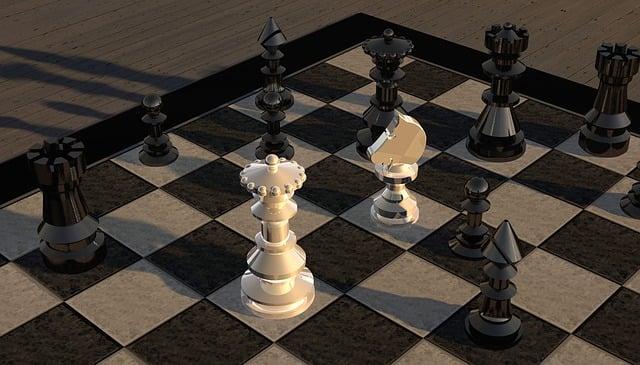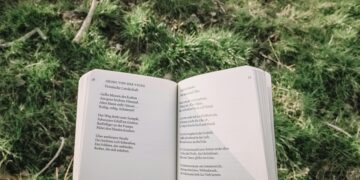Table of Contents
The fluorescent lights of the conference room hummed, a sound I’d never noticed before.
My heart was a frantic drum against my ribs.
I could feel sweat beading on my forehead, my meticulously prepared notes blurring into an indecipherable mess.
In five minutes, I was supposed to lead the most important client presentation of my career, the culmination of a year’s worth of 16-hour days.
But I couldn’t breathe.
It felt less like a panic attack and more like my entire engine had seized.
Outwardly, I was the picture of success—a rising star in my field, confident, driven, and always in control.
Inwardly, however, I was living in what had become a repetitious hell on earth, a frightened and paranoid person hiding behind a mask of competence.1
This was my breaking point, the moment I could no longer ignore the paradox that had come to define my life: the more successful I became on the outside, the more chaotic and frayed I felt on the inside.
For years, I believed I was burning out despite my success.
The truth, I would come to realize, was far more terrifying.
I was burning out because of the very engine that drove it.
My high-functioning anxiety—the relentless perfectionism, the constant worry, the fear of failure—was not a separate issue I was battling; it was the direct cause of my exhaustion.1
The same ambition that built my career was now systematically dismantling my life.
It was a war I was fighting against myself, and I was losing badly.
Part I: The Unwinnable War: The Anatomy of Modern Exhaustion
My Life on the Hamster Wheel: A Symptom Checklist
Before the panic attack in the conference room, my body had been sending out distress signals for months, which I had dutifully ignored.
My life had become a blur of deadlines and fatigue, a symptom checklist I was too busy to read.
Physically, I was a wreck.
I had chronic headaches, recurring insomnia, and a collection of gastrointestinal problems that my doctor waved off as “just stress”.4
I seemed to catch every cold that went around the office, a testament to my lowered immunity.
Emotionally, I was a stranger to myself.
The person who was once passionate and engaged was now irritable, cynical, and detached from my work and my relationships.4
Behaviorally, I was a mess of contradictions.
I procrastinated on important tasks, yet felt immense guilt when I wasn’t being productive.
I was often late for work, yet stayed long after everyone else had gone home, trying to catch up.1
This state of being wasn’t just stress; it was a clinically recognized psychological syndrome.
Burnout is the result of unmanaged, prolonged occupational stress that leads to emotional exhaustion, depersonalization, and a reduced sense of personal accomplishment—a depletion of one’s personal coping resources.5
I was running on empty, and the engine was starting to smoke.
Naming the Enemy: A Diagnostic Guide to Burnout and Anxiety
For a long time, I just thought I was “tired” or “stressed.” But giving my struggle a name was the first step toward understanding it.
Burnout isn’t a monolithic experience; it manifests in different ways depending on the person and their circumstances.
Research has identified three distinct profiles, and seeing them laid out was a revelation.6
It helped me realize I wasn’t just lazy or failing; I was experiencing a specific, identifiable syndrome.
| The Three Faces of Burnout |
| Frenetic Burnout |
| Experienced by highly committed, ambitious individuals who work themselves into a state of exhaustion. They often neglect personal well-being and boundaries in the pursuit of success, feeling constantly overworked and overwhelmed. This type is fueled by an “all-in” attitude and a sense of obligation.6 |
I was a textbook case of frenetic burnout, driven by the invisible engine of high-functioning anxiety.
On the surface, I was composed and successful, but underneath, I was plagued by a constant hum of worry, perfectionism, and an intense fear of failure.1
Fighting a Ghost: Why Our Instincts Are the Trap
My initial attempts to fix myself were based on pure instinct, and they were all disastrously wrong.
I tried to suppress my anxious thoughts, to wrestle them into submission.
When that failed, I tried to paper over them with forced positivity, telling myself to “just be happy.” I desperately tried to “empty my mind,” believing that a blank mental slate was the key to peace.
Each attempt only left me more exhausted and frustrated.7
I was falling for the most common myths about mental well-being.
I didn’t know then that mindfulness isn’t about emptying your mind, but about observing your thoughts without judgment.8
It isn’t about forcing positive thinking, but about developing a new, more accepting relationship with
all of your emotions, including the difficult ones.10
The goal isn’t to achieve a permanent state of relaxation, but to build resilience and equanimity in the face of life’s inevitable ups and downs.10
My core mistake was something psychologists call “experiential avoidance”—the attempt to fight, control, suppress, or escape from unwanted internal experiences like thoughts, feelings, and bodily sensations.11
The problem wasn’t the anxiety; it was the
war I was waging against it.
It was like being in a tug-of-war with a monster.
The harder I pulled on the rope, trying to drag the monster of anxiety into a pit, the harder it pulled back, and the more exhausted I became.
I was so focused on the fight that I didn’t realize I was the one keeping the struggle going.
The monster had no power without my pulling on the other end of the rope.13
I spent years trying to win a war against my own mind.
I finally realized that the only winning move was to stop fighting.
I had to drop the rope.
Part II: The Epiphany: It’s Not the Bone, It’s the Chase
The Day I Dropped the Rope
The real turning point didn’t happen in a therapist’s office or on a yoga M.T. It happened in my car, stuck in traffic, late for a meeting, with the familiar drumbeat of panic starting in my chest.
My old instinct was to fight it—to clench the steering wheel, curse the traffic, and mentally berate myself for my anxiety.
But this time, exhausted and out of options, I tried something different.
I remembered an article I’d read.
I didn’t fight.
I didn’t try to fix anything.
I just… noticed.
I noticed the tightness in my chest.
I noticed my shallow breathing.
I noticed the frantic, looping thoughts: “I’m going to be late.
They’ll be angry.
I’m going to lose this client.” I observed them without judging them, without believing them, and without trying to push them away.
For the first time, I saw them for what they were: just thoughts, just feelings, just sensations.
They were happening, but they weren’t me.14
In that moment of non-judgmental awareness, something shifted.
The panic didn’t vanish, but its power over me did.
I had stopped pulling on the rope, and I realized I was not my thoughts.17
A New Mental Operating System: The Lion and the Dog
This small experience opened the door to a new way of understanding my mind.
The most powerful tool I found for this was a simple but profound metaphor: the Lion Mind versus the Dog Mind.19
Imagine any stimulus—a worrying thought, a pang of anxiety, a critical email from your boss.
Let’s call this stimulus the Bone.
- The Dog Mind is our default, reactive state. When the Dog Mind sees the Bone, it has tunnel vision. It immediately gives chase. Its attention is hijacked, its reality controlled by the stimulus. It spends its life frantically chasing one bone after another, never at peace, always reacting.
- The Lion Mind is the cultivated state of mindful awareness. The Lion Mind sees the Bone, but it also sees the person throwing it. It sees the wider environment. It is aware of its own internal state—its posture, its breath. The Lion sits with poise and dignity. It has autonomy. It chooses whether to engage with the bone, ignore it, or do something else entirely. It is the master of its own attention.
This metaphor was life-changing because it reframed my entire goal.
The problem was never the existence of bones—anxious thoughts and difficult feelings are a part of life.
The problem was that I was living as the dog.
My identity had become fused with my reactions.
Mindfulness, I realized, wasn’t about getting rid of the bones; it was about transforming the dog into the lion.
This shift is what psychologists call “de-centering” or developing “self-as-context”.20
It’s the understanding that you are not the chess pieces (your thoughts and feelings) locked in a frantic battle.
You are the chessboard itself—the calm, stable awareness that holds all the pieces without being defined by them.13
For my entire life, I had been the dog, chasing every scrap of worry or self-criticism thrown my Way. Mindfulness taught me that it was possible to become the lion—to sit with dignity and power, and to choose where I place my attention.
Part III: Forging the Lion Mind: A Practical Toolkit for Regaining Your Life
Becoming the lion doesn’t happen overnight.
It requires practice—training the muscle of attention.
The following principles and practices, drawn from structured programs like Mindfulness-Based Stress Reduction (MBSR), are the tools I used to build my own “Lion Mind”.21
Principle 1: Learning to Sit (The Foundation of Formal Practice)
Formal practice is like going to the gym for your mind.
It’s dedicated time you set aside to intentionally cultivate awareness.
- The Breath as an Anchor: The simplest and most fundamental practice is focusing on the breath. It’s not about breathing in a special way; it’s about using the physical sensation of your breath—the air entering your nostrils, your chest and belly rising and falling—as an anchor for your attention. When your mind wanders (and it will), your job is simply to notice that it has wandered and gently, without judgment, guide it back to the breath. This act of returning is the core “rep” of the mental workout.14
- The Body Scan: This practice involves systematically bringing your attention to different parts of your body, from your toes to the top of your head. As you focus on each part, you simply notice whatever sensations are there—warmth, tingling, pressure, or even numbness—without trying to change them. The body scan is incredibly powerful for reconnecting the mind and body, which are often disconnected by chronic stress. It helps you become aware of where you hold tension and allows you to consciously release it.21
- Sitting Meditation (Observing the Mind): Once you’re comfortable with the anchor of the breath, you can expand your awareness to include the flow of thoughts and feelings themselves. Here, analogies are incredibly helpful. You can imagine your thoughts as clouds drifting across the vast sky of your awareness—some dark and stormy, others light and wispy, but all of them temporary and passing.14 Or you can picture yourself sitting on the bank of a river, placing each thought on a leaf and watching it float downstream.13 The goal is not to stop the thoughts, but to stop being swept away by the current.
Principle 2: Seeing the World Anew (The Art of Informal Practice)
Mindfulness isn’t just something you do for 20 minutes on a cushion.
The real transformation happens when you bring that same quality of awareness into your everyday life.14
- Mindful Eating: I started by transforming one meal a day. Instead of mindlessly scrolling through my phone while eating, I would pay full attention to the food. I noticed the colors, the smells, the textures, and the tastes. This simple practice, modeled on the classic “raisin exercise,” turned a routine chore into a rich sensory experience and grounded me in the present moment.22
- Mindful Walking: On my way to the subway, I would practice walking meditation. I’d focus on the sensation of my feet hitting the pavement, the rhythm of my stride, and the feeling of my body moving through space. It turned a mundane commute into an opportunity for practice.22
- Mindful Commuting: That moment in my car that sparked my journey became a new practice. Instead of getting frustrated by traffic, I would use the time to notice my surroundings—the color of the sky, the shape of the clouds, the sound of the radio—without judgment. I learned to enjoy the sunrise instead of cursing the delay.29
Principle 3: Taming the Inner Critic (The Essential Attitudes)
How you practice is just as important as what you practice.
The attitudinal foundations of mindfulness are what prevent it from becoming another stressful, goal-oriented task on your to-do list.
These include non-judging, patience, a beginner’s mind, trust, non-striving, acceptance, and letting go.21
For me, the most critical attitude to cultivate was self-compassion.
My inner critic was the drill sergeant behind my frenetic burnout.
Mindfulness gave me the tools to change that relationship.
The primary tool for this is Loving-Kindness Meditation (also known as Metta).
It’s a simple but profound practice of actively cultivating feelings of warmth and goodwill.
You silently repeat phrases like “May I be happy.
May I be healthy.
May I be safe.
May I live with ease.” You start by directing these wishes toward yourself, then expand the circle to a loved one, a neutral person, a difficult person, and eventually all beings.14
This practice directly counteracts the habit of harsh self-judgment and builds the muscle of kindness.
To avoid feeling overwhelmed, it’s best to start small.
Here is a simple starter kit to guide your first week.
| Your ‘Lion Mind’ Starter Kit: Three Practices for Your First Week |
| Practice 1: The 3-Minute Breathing Space |
| A quick “reset” for stressful moments. Step 1 (1 min): Acknowledge what is here. Notice your thoughts, feelings, and body sensations without judgment. Step 2 (1 min): Gather your attention. Gently focus on the physical sensations of the breath. Step 3 (1 min): Expand your awareness. Broaden your attention to include the whole body and your surroundings. |
Part IV: The Rewards of a Regulated Mind: The Science of Transformation
A Quieter Mind, A Calmer Body: The Proven Payoffs
The changes I felt were not just in my head; they were profound and measurable.
Science has robustly documented the benefits of mindfulness, validating the transformations that millions have experienced.
Mentally and emotionally, the effects are significant.
Countless studies show that mindfulness-based programs effectively reduce stress, anxiety, depression, and even the perception of chronic pain.12
One of the key mechanisms, particularly for depression, is learning to “de-center” from negative thoughts.
Instead of being pulled into a downward spiral, you learn to see thoughts as passing mental events, like leaves on a stream.
This skill has been shown to be as effective as maintenance antidepressants in preventing relapse in people with recurrent depression.20
The physical health benefits are just as impressive.
Research links mindfulness practice to lowered blood pressure, improved sleep quality, a stronger immune response, and better management of chronic illnesses like heart disease and fibromyalgia.12
It also helps cultivate healthier habits.
By increasing your awareness, you’re more likely to notice the positive feeling after a workout or the unpleasant “sugar crash” after eating junk food, which provides your brain with clear data to make better choices in the future.20
Rewiring Your Brain for Resilience: The Neuroscience of Change
These benefits are not magic.
They are the result of neuroplasticity—the brain’s remarkable ability to change its structure and function in response to experience.11
When you practice mindfulness, you are literally rewiring your brain for calm and resilience.
Neuroimaging studies have revealed remarkable changes in the brains of regular meditators:
- A Stronger “CEO”: Practitioners show increased gray matter density in the prefrontal cortex, the part of the brain responsible for higher-order functions like awareness, concentration, and executive decision-making.14
- A Weaker “Fear Center”: They exhibit decreased gray matter density in the amygdala, the brain’s alarm system that triggers the fight-or-flight response. A less reactive amygdala means a lower baseline of stress and anxiety.21
- Less Stress Hormone: Mindfulness practice has been shown to reduce circulating levels of cortisol, the primary stress hormone.25
These changes highlight a restored feedback loop between the mind and body.
Before mindfulness, my system was short-circuiting.
My anxious mind would trigger a stress response in my body (stomach issues, tension), and that physical discomfort would in turn fuel more anxious thoughts.
Mindfulness healed this broken system.
As my mind grew quieter through meditation, my chronic stomach issues faded.
As my body relaxed through gentle yoga, my anxious thoughts had less fuel.21
It wasn’t a one-way street; it was a complete restoration of a system that had been at war with itself for years.
Conclusion: Living as the Lion
My life today is not free of stress, deadlines, or difficult emotions.
The bones of life are still thrown my Way. The difference is that I no longer live as the frantic, reactive dog.
I have the tools to meet challenges with the poise and presence of the lion.
I am calmer, more accepting of hardship, and find a deep, quiet joy in simple moments—the taste of my morning coffee, the warmth of the sun, the sound of my own steady breath.33
It is important to approach this practice with a clear-eyed perspective.
The modern mindfulness movement has faced valid criticism, particularly regarding the rise of “McMindfulness”—shallow, instrumentalized versions used in corporate settings as a quick fix for systemic problems like toxic work cultures and excessive workloads.8
Mindfulness should never be a substitute for organizational responsibility.
However, to dismiss the practice because of these critiques is to throw the lion out with the bathwater.
While organizations must create healthier environments, personal mindfulness practice is, at its core, a radical act of self-reclamation.
It provides the clarity to see a situation for what it is and the resilience to respond wisely.
It empowers you to either advocate for change within a system or, if necessary, to make the courageous decision to leave a toxic one—the very opposite of the passivity some critics fear.8
If my story resonates with you—if you feel like you’re drowning in the demands of a life that looks good on paper but feels hollow inside—I invite you to begin this journey.
Don’t see it as another demanding item on your to-do list.
See it as a profound and compassionate act of returning to yourself.
It’s a chance to stop chasing the bone, to drop the rope, and to reclaim your life, one present moment at a time.
Works cited
- Mindfulness and High-Functioning Anxiety: Navigating the Hidden Struggles, accessed August 12, 2025, https://www.susanmcgarvie.com/mindfulness-and-high-functioning-anxiety-navigating-the-hidden-struggles/
- Can I hear a few personal stories about how meditation has affected …, accessed August 12, 2025, https://www.reddit.com/r/Meditation/comments/3o8uqc/can_i_hear_a_few_personal_stories_about_how/
- How Mindfulness Changed My Life – Reddit, accessed August 12, 2025, https://www.reddit.com/r/Mindfulness/comments/m2zwtn/how_mindfulness_changed_my_life/
- Burnout – Mental Health UK, accessed August 12, 2025, https://mentalhealth-uk.org/burnout/
- Full article: Reducing healthcare burnout through meditation: benefits and challenges, accessed August 12, 2025, https://www.tandfonline.com/doi/full/10.1080/28324765.2025.2477699
- How to deal with burnout – Headspace, accessed August 12, 2025, https://www.headspace.com/mindfulness/burnout
- Challenges of Meditation and Mindfulness: Myths and Realities – Next Level Medical Clinic, accessed August 12, 2025, https://nextlevelmedicalclinic.com/challenges-meditation-mindfulness-myths-realities/
- Debunking 9 Common Myths About Mindfulness – RethinkCare, accessed August 12, 2025, https://www.rethinkcare.com/resources/debunking-9-common-myths-about-mindfulness/
- The most common misconceptions about meditation : r/yoga – Reddit, accessed August 12, 2025, https://www.reddit.com/r/yoga/comments/1ezw3km/the_most_common_misconceptions_about_meditation/
- 10 Most Common Mindfulness Misconceptions: Why ‘Being Present’ Is More Than Just Meditation – My LA Therapy, accessed August 12, 2025, https://mylatherapy.com/10-most-common-mindfulness-misconceptions-why-being-present-is-more-than-just-meditation/
- What Is Mindfulness? Meaning, Definition & Benefits – Positive Psychology, accessed August 12, 2025, https://positivepsychology.com/what-is-mindfulness/
- Benefits of Mindfulness – HelpGuide.org, accessed August 12, 2025, https://www.helpguide.org/mental-health/stress/benefits-of-mindfulness
- Compendium of ACT Metaphors – Coping.us, accessed August 12, 2025, https://coping.us/images/Compendium_of_ACT_Metaphors.pdf
- Mindfulness Definition | What Is Mindfulness, accessed August 12, 2025, https://greatergood.berkeley.edu/topic/mindfulness/definition
- Mindfulness | Psychology Today, accessed August 12, 2025, https://www.psychologytoday.com/us/basics/mindfulness
- Effects of Mindfulness on Psychological Health: A Review of Empirical Studies – PMC, accessed August 12, 2025, https://pmc.ncbi.nlm.nih.gov/articles/PMC3679190/
- How Mindfulness Changes Your Life – Left Brain Buddha, accessed August 12, 2025, https://leftbrainbuddha.com/mindfulness-changes-life/
- How meditation changed my life – Reddit, accessed August 12, 2025, https://www.reddit.com/r/Meditation/comments/1etxqg5/how_meditation_changed_my_life/
- Cultivating the Lion Mind: A Mindfulness Metaphor that Sticks …, accessed August 12, 2025, https://centerforadolescentstudies.com/cultivating-the-lion-mind-a-mindfulness-metaphor-that-sticks/
- Mindfulness for Your Health | NIH News in Health, accessed August 12, 2025, https://newsinhealth.nih.gov/2021/06/mindfulness-your-health
- Mindfulness-based stress reduction – Wikipedia, accessed August 12, 2025, https://en.wikipedia.org/wiki/Mindfulness-based_stress_reduction
- Mindfulness-Based Stress Reduction: The Ultimate MBSR Guide, accessed August 12, 2025, https://positivepsychology.com/mindfulness-based-stress-reduction-mbsr/
- Mindfulness-Based Stress Reduction: Benefits and Techniques – Olympic Behavioral Health, accessed August 12, 2025, https://olympicbehavioralhealth.com/therapies/mindfulness-based-stress-reduction-mbsr/
- Mindfulness exercises – Mayo Clinic, accessed August 12, 2025, https://www.mayoclinic.org/healthy-lifestyle/consumer-health/in-depth/mindfulness-exercises/art-20046356
- Mindfulness-Based Stress Reduction For Better Mental Health, accessed August 12, 2025, https://pacificcoastmh.com/mindfulness-stress-reduction/
- Mindfulness Of Thoughts As Clouds In The Sky | Dr Lillian Nejad, accessed August 12, 2025, https://insighttimer.com/lnejad/guided-meditations/mindfulness-of-thoughts-as-clouds-in-the-sky
- 5 Components Of Mindfulness-Based Stress Reduction (MBSR) | by Mansi Nemiwal, accessed August 12, 2025, https://medium.com/@mansinemiwal/5-components-of-mindfulness-based-stress-reduction-mbsr-928faee64ed2
- 21 Mindfulness Exercises & Activities for Adults – Positive Psychology, accessed August 12, 2025, https://positivepsychology.com/mindfulness-exercises-techniques-activities/
- How Mindfulness Changed My Life: A Law Student’s Story – Georgia …, accessed August 12, 2025, https://news.gsu.edu/2018/04/27/how-mindfulness-changed-my-life-a-law-students-story/
- 23 Amazing Health Benefits of Mindfulness for Body and Brain – Positive Psychology, accessed August 12, 2025, https://positivepsychology.com/benefits-of-mindfulness/
- Mindfulness-Based Cognitive Therapy | Psychology Today, accessed August 12, 2025, https://www.psychologytoday.com/us/therapy-types/mindfulness-based-cognitive-therapy
- Meditation to Boost Health and Well-Being | American Heart Association, accessed August 12, 2025, https://www.heart.org/en/healthy-living/healthy-lifestyle/mental-health-and-wellbeing/meditation-to-boost-health-and-wellbeing
- How has mindfulness changed your life? – Reddit, accessed August 12, 2025, https://www.reddit.com/r/Mindfulness/comments/761inx/how_has_mindfulness_changed_your_life/
- How Mindfulness Helps Beat Burnout | Psychology Today, accessed August 12, 2025, https://www.psychologytoday.com/us/blog/lessons-from-a-burnt-out-psychologist/202408/how-mindfulness-helps-beat-burnout






